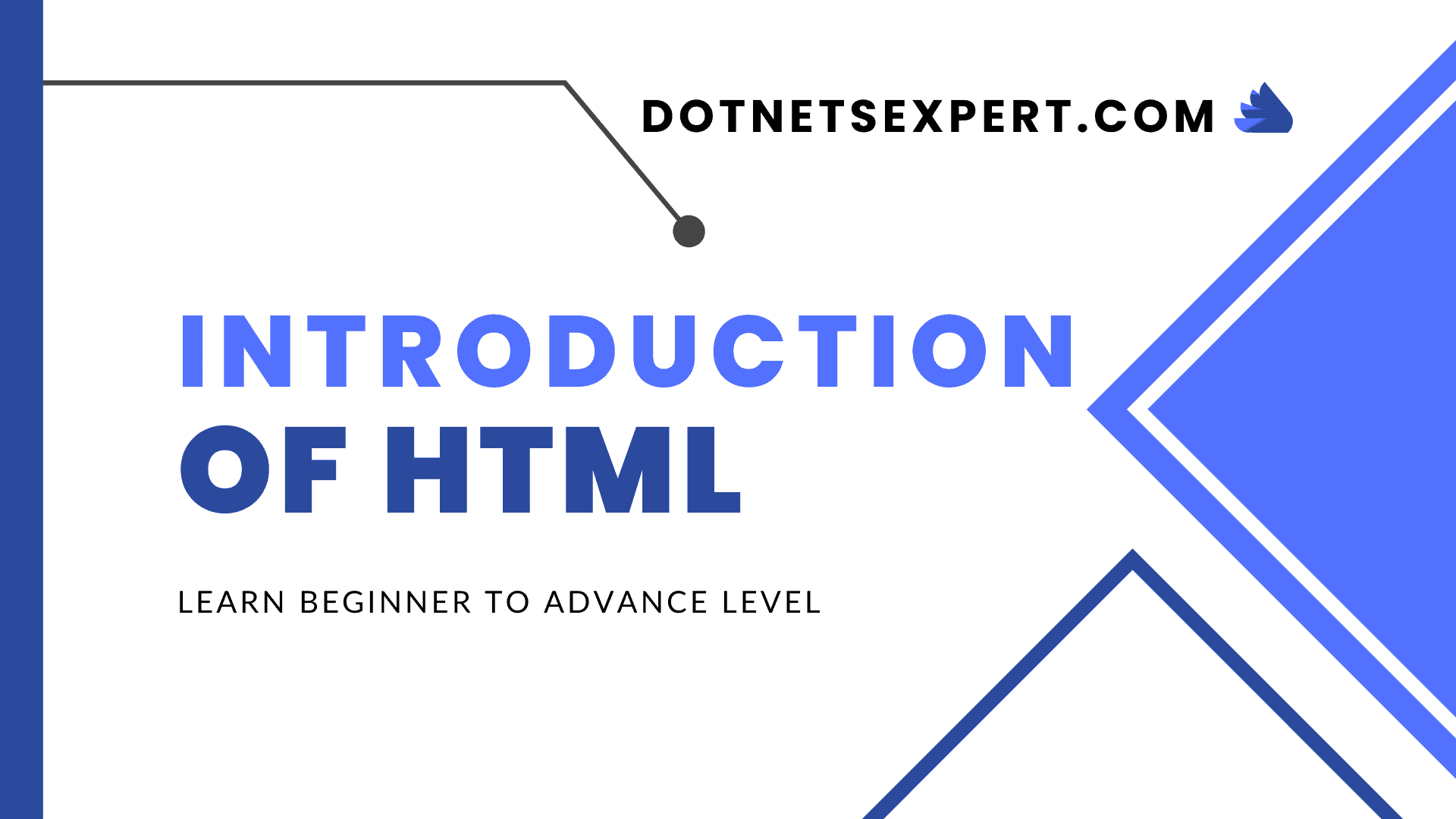Before starting HTML Tutorial You show know about web site and why learn HTML
Lets start that
What is Website
A site or website is central location of various web pages that are all related and can be accessed by visiting the home page using a browser, for example ,the Dotnetsexpert website address https://www.dotnetsexpert.com
What is HTML
HTML stands for Hyper Text Markup Language. It is used to create and design web pages.
HTML is the standard language which is used to create web pages and its backbone of all websites.
HTML provides the structure and content of web pages and is used to format text, images, videos, and other multimedia elements on a webpage.
Its responsible for for presentation of data on the webpages or browser ,The markup tell the web browser how to display a web pages word and image for the user
Its consists of a series of tags and attributes that are used to mark up content and specify how it should be displayed.
Tags are enclosed in angle brackets, and they provide information about the content they contain. Attributes provide additional information about tags and its is used to modify their behavior.
Its essential language for web development and is used in conjunction with other web technologies such as CSS and JavaScript to create modern, responsive, and interactive websites.
HTML is responsible for create only structure of body
History of HTML
In 1980 ,Physicists Tim Berners-Lee a contractor at CERN, proposed and prototyped ENQUIRE , a system for CERN researchers to use and share documents.
The history of HTML begins with the birth of the World Wide Web in the late 1980s. The first web page was created in 1991 by Tim Berners-Lee, a computer scientist at CERN, the European Organization for Nuclear Research.
This page was written in HTML, which was the first markup language for the web.
HTML initially had limited capabilities, with only a few basic tags for formatting text and displaying images. However, it quickly evolved as more people began to use the web and demand for more advanced features grew. In 1993, the first version of HTML, known as HTML 1.0, was released, which included support for basic formatting, headings, lists, and hypertext links.
In the years that followed, new versions of HTML were released, each adding new features and capabilities.
HTML 2.0 was released in 1995 and included support for tables, background colors, and form elements.
HTML 3.2 was released in 1997 and introduced support for frames, style sheets, and the ability to embed multimedia content such as audio and video.
HTML 4.0 was released in 1998 and included support for advanced layout and styling features such as cascading style sheets (CSS), which allowed for more precise control over the appearance of web pages.
HTML 4.01, a minor revision of HTML 4.0, was released in 1999.
In 2000, the World Wide Web Consortium (W3C), the organization responsible for developing web standards, began work on XHTML, a reformulation of HTML as an XML application. XHTML 1.0 was released in 2000, and it was designed to be more modular, extensible, and easier to maintain than HTML.
In 2014, HTML5 was released, which included a wide range of new features and capabilities, such as multimedia support, canvas drawing, local storage, and offline web applications. HTML5 has become the standard for web development and is widely used to create modern, interactive, and responsive websites.
Basic Syntax of HTML
here is the basic syntax of HTML :
- HTML document type declaration (DOCTYPE): This is the first line of an HTML document and specifies the version of HTML being used.
- HTML tags: HTML tags are used to define the structure and content of web pages. They are enclosed in angle brackets (<>) and come in pairs, with a start tag and an end tag.
- Elements: Elements are created by combining one or more HTML tags to form a container for content. For example, the <p> tag is used to define a paragraph element.
- Attributes: HTML attributes are used to provide additional information about an element. They are defined within the start tag of an element and consist of a name and a value, separated by an equals sign (=).
- Content: The content of an HTML element is the text, images, or other media that is contained within the element.
Comments: Comments are used to add notes or explanations to an HTML document. They are enclosed in <!– –> and are not displayed on the web page.
<!DOCTYPE html>
<html>
<head>
<title>My First HTML Page</title>
</head>
<body>
<h1>Welcome to my website!</h1>
<p>This is my first HTML page.</p>
<img src="image.jpg" alt="My Image">
</body>
</html>
Use of HTML
It is used to create structure of the body
it is used to responsible for presentation of data on the webpages or browser
It is the backbone of all webpages
It is easily support any other frontend language like CSS ,JavaScript, etc.
Advantage of HTML
- Easy to Use
- No prior knowledge about any programing language
- It is very to create web pages
- it easy to understand
- it is human readable form
- its not need to install any compiler and interpreter

Helpful
very Helpful